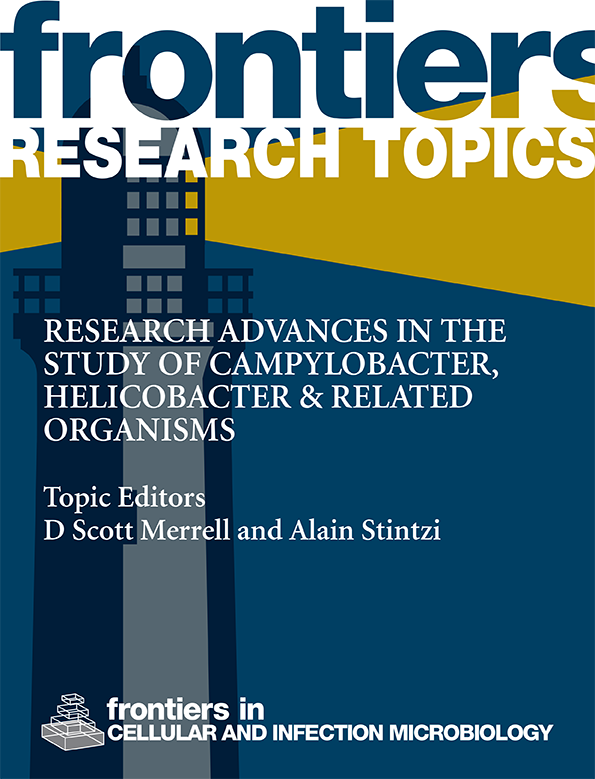利用台式扫描电子显微镜对亚胺培南和强力霉素的杀菌和抑菌作用进行早期预测
IF 4.6
2区 医学
Q2 IMMUNOLOGY
Frontiers in Cellular and Infection Microbiology
Pub Date : 2024-08-29
DOI:10.3389/fcimb.2024.1431141
引用次数: 0
摘要
导言我们的工作旨在建立一种概念验证方法,与传统的基于培养的方法相比,这种方法可以利用扫描电子显微镜(SEM)及早预测抗生素对细菌的杀菌和抑菌作用。我们根据三个主要标准制定了基于 SEM 的预测评分:细菌密度、形态/结构和活力。我们使用 TM4000Plus II-台式扫描电子显微镜(日本日立公司)拍摄的扫描电子显微镜显微照片,按照优化、快速和自动化的采集和分析协议,确定了每个标准的结果。我们将我们的方法与传统的培养菌落计数金标准方法和这两种效果的经典定义进行了比较。讨论与培养至少需要 18 小时相比,这种早期预测可以快速、尽早地识别杀菌和抑菌效果。这在开发 SEM 自动测试和机器学习模型(可识别抗生素效果并帮助确定细菌的敏感性)方面有多种应用前景。本文章由计算机程序翻译,如有差异,请以英文原文为准。
Early prediction of the bactericidal and bacteriostatic effect of imipenem and doxycycline using tabletop scanning electron microscopy
IntroductionOur work aims at establishing a proof-of-concept for a method that allows the early prediction of the bactericidal and bacteriostatic effects of antibiotics on bacteria using scanning electron microscopy (SEM) as compared to traditional culture-based methods.MethodsWe tested these effects using Imipenem (bactericidal) and Doxycycline (bacteriostatic) with several strains of sensitive and resistant Escherichia coli . We developed a SEM-based predictive score based on three main criteria: Bacterial Density, Morphology/Ultrastructure, and Viability. We determined the results for each of these criteria using SEM micrographs taken with the TM4000Plus II-Tabletop-SEM (Hitachi, Japan) following an optimized, rapid, and automated acquisition and analysis protocol. We compared our method with the traditional culture colony counting gold standard method and classic definitions of the two effects.ResultsOur method revealed total agreement with the CFU method and classic definition by visualizing the effect of the antibiotic at 60 minutes and 120 minutes using SEM.DiscussionThis early prediction allows a rapid and early identification of the bactericidal and bacteriostatic effects as compared to culture that would take a minimum of 18 hours. This has several future applications in the development of SEM-automated assays coupled to machine learning models that identify the antibiotic effect and facilitate determination of bacterial susceptibility.
求助全文
通过发布文献求助,成功后即可免费获取论文全文。
去求助
来源期刊

Frontiers in Cellular and Infection Microbiology
IMMUNOLOGY-MICROBIOLOGY
CiteScore
7.90
自引率
7.00%
发文量
1817
审稿时长
14 weeks
期刊介绍:
Frontiers in Cellular and Infection Microbiology is a leading specialty journal, publishing rigorously peer-reviewed research across all pathogenic microorganisms and their interaction with their hosts. Chief Editor Yousef Abu Kwaik, University of Louisville is supported by an outstanding Editorial Board of international experts. This multidisciplinary open-access journal is at the forefront of disseminating and communicating scientific knowledge and impactful discoveries to researchers, academics, clinicians and the public worldwide.
Frontiers in Cellular and Infection Microbiology includes research on bacteria, fungi, parasites, viruses, endosymbionts, prions and all microbial pathogens as well as the microbiota and its effect on health and disease in various hosts. The research approaches include molecular microbiology, cellular microbiology, gene regulation, proteomics, signal transduction, pathogenic evolution, genomics, structural biology, and virulence factors as well as model hosts. Areas of research to counteract infectious agents by the host include the host innate and adaptive immune responses as well as metabolic restrictions to various pathogenic microorganisms, vaccine design and development against various pathogenic microorganisms, and the mechanisms of antibiotic resistance and its countermeasures.
 求助内容:
求助内容: 应助结果提醒方式:
应助结果提醒方式:


